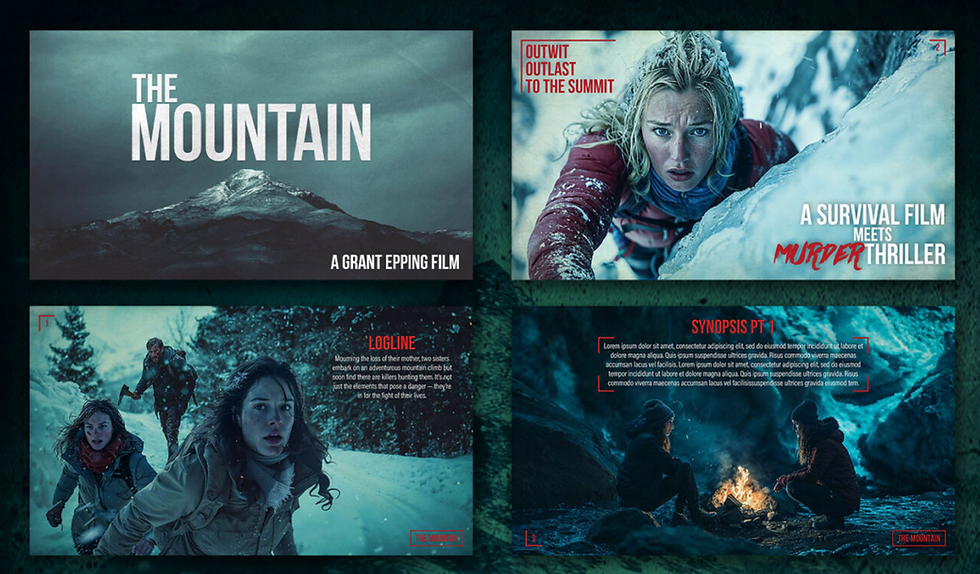How to Create a Strong Post-Production Workflow for Your Film or Project
- Jason OHara

- Apr 23
- 3 min read

Post-production is where the magic happens—transforming raw footage into a polished and compelling final product. A strong post-production workflow ensures efficiency, creativity, and consistency, helping you bring your vision to life without unnecessary stress. Here’s a step-by-step guide to structuring your workflow for success.
1. Organize Footage and Assets
The foundation of a smooth post-production process is organizing your materials. Create a well-structured folder system for your video clips, audio files, graphics, and any other assets. Label your files clearly by scenes, dates, or camera angles to make them easy to locate. Back everything up in multiple locations, such as external drives or cloud storage.
Pro Tip: Use media management software like Adobe Prelude or DaVinci Resolve (I use DaVinci) to tag, rename, and sort your clips quickly.
2. Assemble a Rough Cut
Once your assets are organized, start assembling a rough cut. Lay your clips on the timeline in chronological order, trim excess footage, and focus on building the narrative structure. At this stage, it’s all about establishing the flow of the story—not perfection.
Pro Tip: Use placeholders for missing elements like music or visual effects to keep your workflow moving smoothly.
3. Add Titles and Special Effects
With your rough cut in place, start adding titles, on-screen text, and special effects. Whether it’s a lower-third graphic, an animated intro, or subtle visual effects, this stage is all about enhancing the story. Ensure your effects blend naturally with the footage to avoid distractions.
Pro Tip: Use software like Adobe After Effects, DaVinci Resolve Fusion or Blender for professional-quality visual effects and animations.
4. Color Grading
Color grading is where your project gets its final visual polish. Begin with basic color correction to balance exposure, white balance, and contrast. Once the footage is consistent, apply creative color grading to enhance the mood and tone.
Pro Tip: If you’re aiming for a specific look (e.g., warm tones for a nostalgic feel), refer to your film’s visual references or mood board during this step.
5. Sound Design
Sound design is as critical as the visuals in post-production. Clean up audio, remove background noise, and balance levels. Add sound effects, background music, and Foley to create a rich auditory experience. For dialogue-heavy scenes, consider using ADR (Automated Dialogue Replacement) to ensure clarity.
Pro Tip: Use tools like Adobe Audition or Pro Tools for precise audio editing and sound mixing.
6. Review and Refine
Once all the elements are in place, review the project thoroughly. Watch it multiple times with fresh eyes, focusing on different aspects like pacing, transitions, and continuity. Gather feedback from collaborators or test audiences to identify areas for improvement.
Pro Tip: Create a detailed checklist to review audio sync, visual consistency, text accuracy, and file resolution before finalizing the project.
7. Export and Deliver
With all revisions completed, it’s time to export your project. Choose the appropriate file format and resolution based on your distribution needs, whether it’s for theatrical release, online streaming, or social media. Create a high-resolution master file and export compressed versions for easier sharing.
Pro Tip: Verify the exported files on multiple devices to ensure compatibility and quality.

Why Work With Me?
As an experienced filmmaker, I understand the importance of a strong post-production workflow in creating standout projects. From organizing your footage to delivering the final product, I’m here to streamline the process and bring your creative vision to life.
Ready to simplify your post-production process? Contact me today, and let’s make your project a success.

— Jason



















Great reminder—properly organizing footage is the backbone of an efficient post-production workflow. It saves time, reduces frustration, and ensures no important asset slips through the cracks. While you're deep into editing or reviewing content, consider using Black screen onl for a full black screen online solution that supports your creative process. This smooth, plugin-free tool offers a distraction-free Charcoal View ideal for testing display quality, saving energy on OLED screens, and reducing eye strain during long editing sessions. It’s a must-have utility whether you’re color grading, syncing audio, or simply letting your screen rest between tasks.